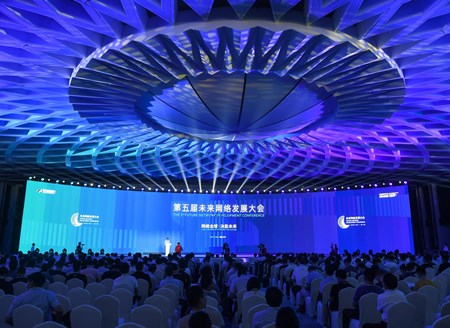
BEIJING, Dec. 6 (Xinhua) -- China, a crucial contributor to the global fight against climate change, has taken solid steps to advance the green shift in its economic and social development and achieved tangible results, official data revealed.
Three years ago, China made a solemn commitment to the world that it aims to peak carbon dioxide emissions before 2030 and achieve carbon neutrality before 2060.
Since then, the country has embarked on a fast track toward these goals, with highlights in areas including industrial upgrades, cleaner air, renewable energy capacity, and a world-leading position in solar panels, electric cars, and lithium battery production.
"China has always kept its promise and made important contributions to global climate governance," said Chinese Vice Premier Ding Xuexiang while addressing the World Climate Action Summit last week in Dubai, the United Arab Emirates.
PRO-GREEN-GROWTH POLICY
Citing a forecast that 2023 will be the hottest year on record in human history, a report published by the United Nations's World Meteorological Organization last week warned that 2023 marked a year of unprecedented climate records being shattered, as extreme weather events left behind a trail of widespread devastation and despair.
With a strong sense of urgency and duty, China, as it promised, has always been making consistent efforts to fight climate change and mitigate its effects.
Back in 2021, China unveiled an overarching document with a number of policies related to carbon peaking and neutrality, calling for "resolutely curbing the haphazard development of projects that are energy-intensive and have high emissions."
Subsequently, action plans for key areas such as construction materials and non-ferrous metals have been rolled out, detailing specific goals and roadmaps each sector should focus on to reduce the use of fossil fuels and embrace low-carbon production processes.

In November, the National Development and Reform Commission announced that 100 carbon-peaking pilot projects would be launched in 15 provincial regions to solve bottlenecks constraining the country's green and low-carbon development and explore paths toward carbon-peaking in different areas.
By 2025, a policy mechanism conducive to green and low-carbon development in the pilot areas will mostly be in place, together with many innovative practices and reform measures that are feasible and replicable, and can be applied elsewhere, the commission said.
By 2030, innovative practices and reform measures tested at these localities will then play a vital supportive role in carbon peaking at the national level.
TANGIBLE PROGRESS
Initial results of industrial transformation have been achieved. Official data showed that China's crude steel output has declined by 40 million tonnes since the start of the 14th Five-Year Plan period (2021-2025).
China's energy consumption per 10,000 yuan (about 1,408 U.S. dollars) of gross domestic product decreased by 0.1 percent in 2022 from 2021, while CO2 emissions per 10,000 yuan of GDP fell 0.8 percent year on year, according to an official statistical communique.
Reducing dependence on coal in its energy mix is another tough task for China, with concrete actions taken to increase its renewable energy generation.
China's installed capacity of renewable energy exceeded 1.3 billion kilowatts by the end of June this year, surpassing that of coal power for the first time, data from the National Energy Administration showed.
Only four months later, the figure topped 1.4 billion kilowatts, accounting for almost half of the country's total installed power generation capacity.

Building on the success of its domestic energy transition, China also plays a vital role in global renewables manufacturing.
It provides 50 percent of the world's wind equipment and as much as 80 percent of global photovoltaic equipment.
Solar batteries, lithium-ion batteries and electric vehicles have replaced apparel, home appliances and furniture to become the new "three major ones" underpinning China's exports.
Customs data showed that the total export value of the tech-intensive green trio jumped 41.7 percent year on year in the first three quarters of this year, providing key components for other countries' decarbonization drives.
INTERNATIONAL COOPERATION
In addition to reducing its own carbon emissions, China has vigorously promoted international cooperation on green development, energy revolution and climate change.
In Thailand, for example, a hydro-floating solar project was jointly built by China and Thailand in the Sirindhorn Dam and put into commercial operation in October 2021.
With a vast array of solar panels floating on the reservoir, the project generates electricity through solar energy during the day and hydroelectric power at night.
The installed capacity of the project reaches 58.5 megawatts, which can reduce carbon dioxide emissions by 47,000 tonnes every year.
China has also arranged more than 1.2 billion yuan of South-to-South cooperation special funds to enhance developing countries' capacity to cope with climate change.
The country pledged to promote the establishment of a fair, reasonable, cooperative and win-win global climate governance system, Ding said in Dubai.
"As a major responsible developing country, China stands ready to work with all parties to build a clean and beautiful world," Ding said.






